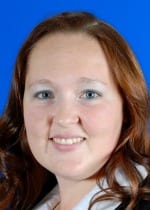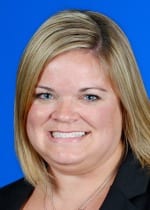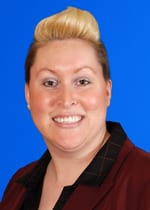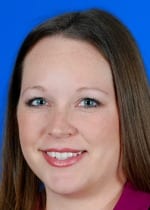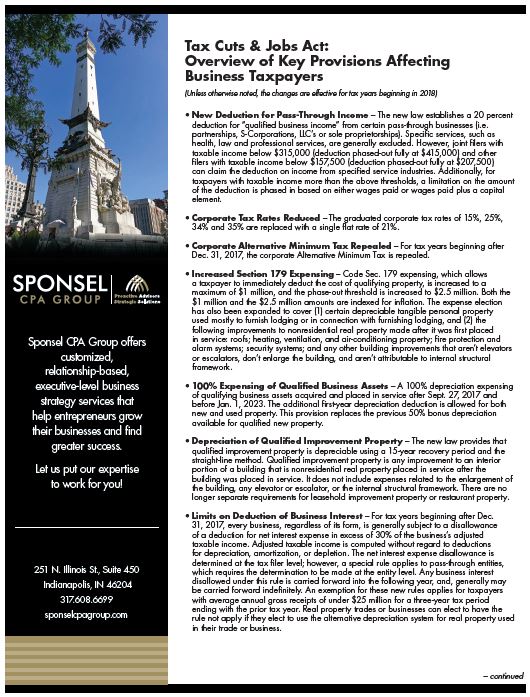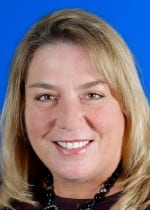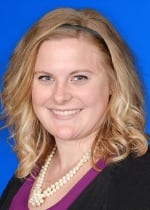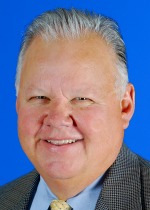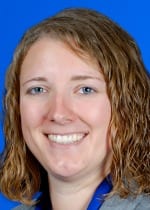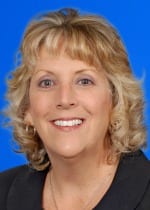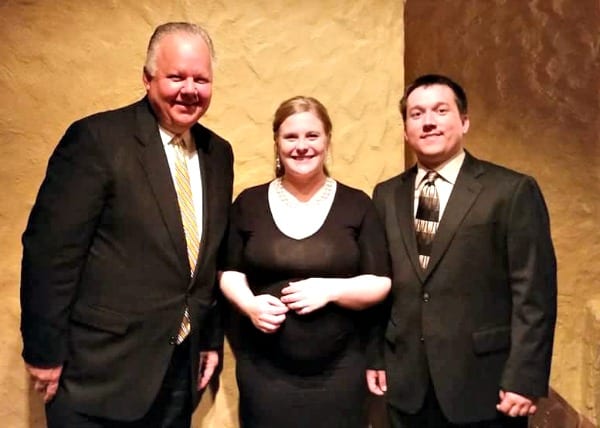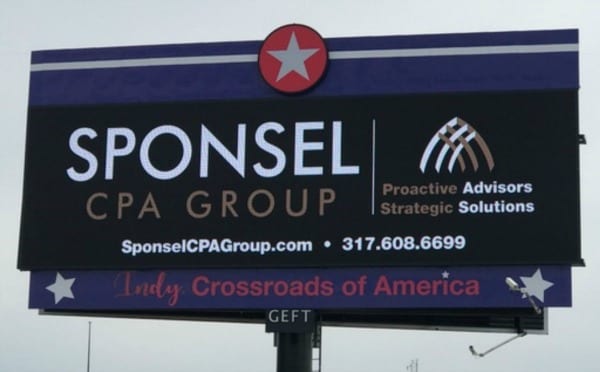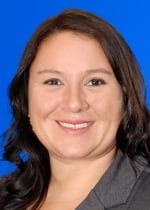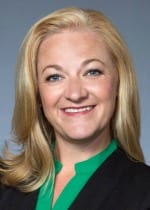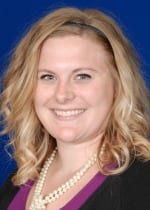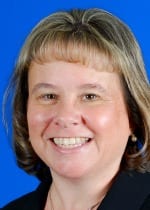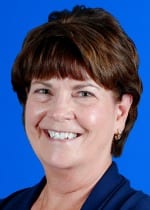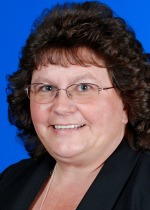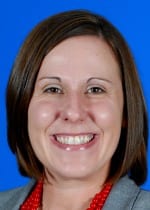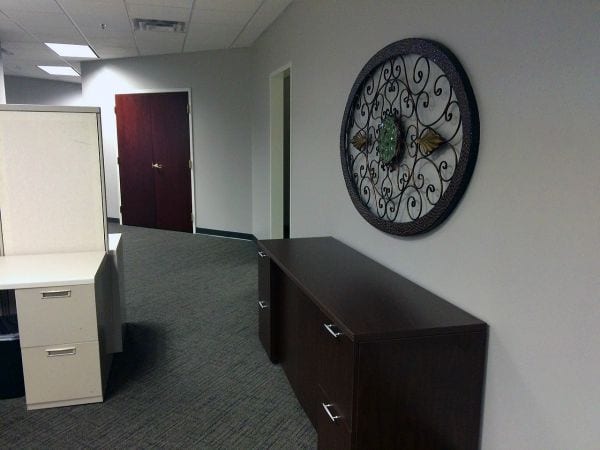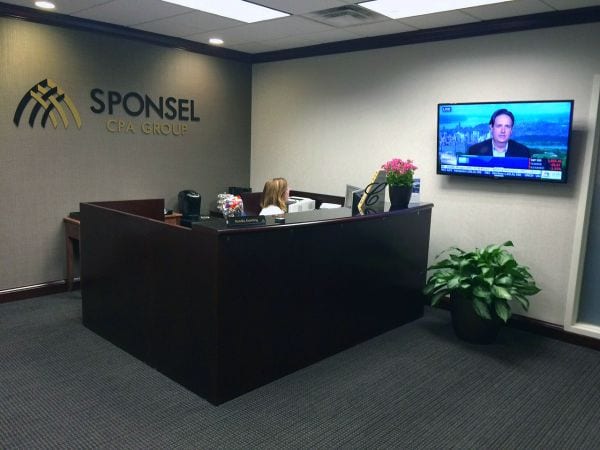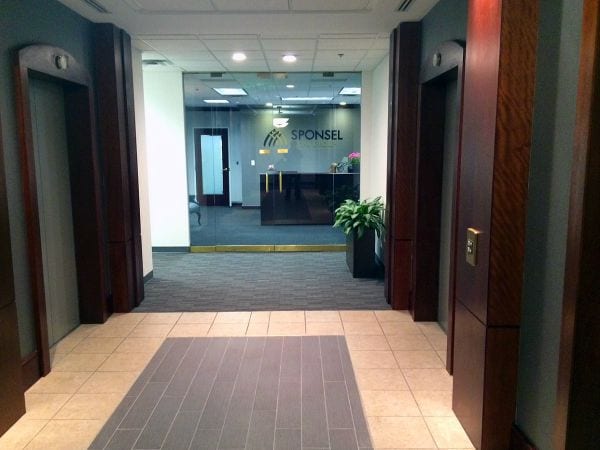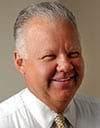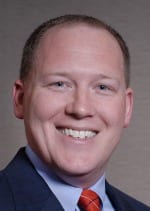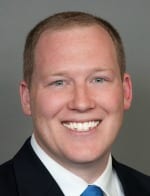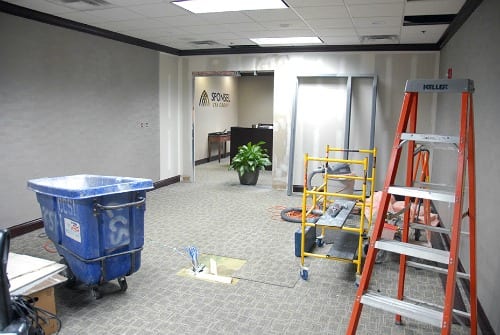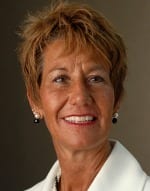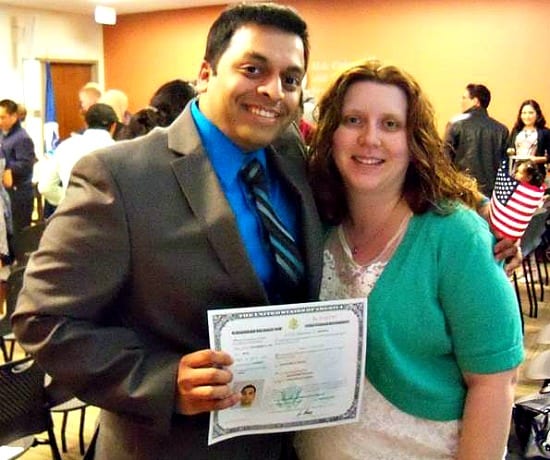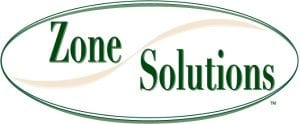TITLE I – EXTENDERS
Subtitle A –Permanent Extensions
PART 1 – Tax Relief for Families and Individuals
Section 101. Enhanced child tax credit made permanent. The child tax credit (CTC) is a $1,000 credit. To the extent the CTC exceeds the taxpayer’s tax liability, the taxpayer is eligible for a refundable credit (the additional child tax credit) equal to 15 percent of earned income in excess of a threshold dollar amount (the “earned income” formula). Until 2009, the threshold dollar amount was $10,000 indexed for inflation from 2001 (which would be roughly $14,000 in 2015). Since 2009, however, this threshold amount has been set at an unindexed $3,000 and is scheduled to expire at the end of 2017, returning to the $10,000 (indexed for inflation) amount. The provision permanently sets the threshold amount at an unindexed $3,000.
Section 102. Enhanced American opportunity tax credit made permanent. The Hope Scholarship Credit is a credit of $1,800 (indexed for inflation) for various tuition and related expenses for the first two years of post-secondary education. It phases out for AGI starting at $48,000 (if single) and $96,000 (if married filing jointly) – these amounts are also indexed for inflation. The American Opportunity Tax Credit (AOTC) takes those permanent provisions of the Hope Scholarship Credit and increases the credit to $2,500 for four years of post-secondary education, and increases the beginning of the phase-out amounts to $80,000 (single) and $160,000 (married filing jointly) for 2009 to 2017. The provision makes the AOTC permanent.
Section 103. Enhanced earned income tax credit made permanent. Low- and moderate income workers may be eligible for the earned income tax credit (EITC). For 2009 through 2017, the EITC amount has been temporarily increased for those with three (or more) children and the EITC marriage penalty has been reduced by increasing the income phase-out range by $5,000 (indexed for inflation) for those who are married and filing jointly. The provision makes these provisions permanent.
Section 104. Extension and modification of deduction for certain expenses of elementary and secondary school teachers. The provision permanently extends the above-the-line deduction (capped at $250) for the eligible expenses of elementary and secondary school teachers. Beginning in 2016, the provision also modifies the deduction to index the $250 cap to inflation and include professional development expenses.
Section 105. Extension of parity for exclusion from income for employer-provided mass transit and parking benefits. The provision permanently extends the maximum monthly exclusion amount for transit passes and van pool benefits so that these transportation benefits match the exclusion for qualified parking benefits. These fringe benefits are excluded from an employee’s wages for payroll tax purposes and from gross income for income tax purposes.
Section 106. Extension of deduction of State and local general sales taxes. The provision permanently extends the option to claim an itemized deduction for State and local general sales taxes in lieu of an itemized deduction for State and local income taxes. The taxpayer may either deduct the actual amount of sales tax paid in the tax year, or alternatively, deduct an amount prescribed by the Internal Revenue Service (IRS).
PART 2 – Incentives for Charitable Giving Section 111. Extension and modification of special rule for contributions of capital gain real property made for conservation purposes. The provision permanently extends the charitable deduction for contributions of real property for conservation purposes. The provision also permanently extends the enhanced deduction for certain individual and corporate farmers and ranchers. The provision modifies the deduction beginning in 2016 to permit Alaska Native Corporations to deduct donations of conservation easements up to 100 percent of taxable income.
Section 112. Extension of tax-free distributions from individual retirement plans for charitable purposes. The provision permanently extends the ability of individuals at least 70½ years of age to exclude from gross income qualified charitable distributions from Individual Retirement Accounts (IRAs). The exclusion may not exceed $100,000 per taxpayer in any tax year.
Section 113. Extension and modification of charitable deduction for contributions of food inventory. The provision permanently extends the enhanced deduction for charitable contributions of inventory of apparently wholesome food for non-corporate business taxpayers. The provision modifies the deduction beginning in 2016 by increasing the limitation on deductible contributions of food inventory from 10 percent to 15 percent of the taxpayer’s AGI (15 percent of taxable income (as modified by the provision) in the case of a C corporation) per year. The provision also modifies the deduction to provide special rules for valuing food inventory.
Section 114. Extension of modification of tax treatment of certain payments to controlling exempt organizations. The provision permanently extends the modification of the tax treatment of certain payments by a controlled entity to an exempt organization.
Section 115. Extension of basis adjustment to stock of S corporations making charitable contributions of property. The provision permanently extends the rule providing that a shareholder’s basis in the stock of an S corporation is reduced by the shareholder’s pro rata share of the adjusted basis of property contributed by the S corporation for charitable purposes.
PART 3 – Incentives for Growth, Jobs, Investment, and Innovation
Section 121. Extension and modification of research credit. The provision permanently extends the research and development (R&D) tax credit. Additionally, beginning in 2016 eligible small businesses ($50 million or less in gross receipts) may claim the credit against alternative minimum tax (AMT) liability, and the credit can be utilized by certain small businesses against the employer’s payroll tax (i.e., FICA) liability.
Section 122. Extension and modification of employer wage credit for employees who are active duty members of the uniformed services. The provision permanently extends the 20-percent employer wage credit for employees called to active military duty. Beginning in 2016, the provision modifies the credit to apply to employers of any size, rather than employers with 50 or fewer employees, as under current law.
Section 123. Extension of 15-year straight-line cost recovery for qualified leasehold improvements, qualified restaurant buildings and improvements, and qualified retail improvements. The provision permanently extends the 15-year recovery period for qualified leasehold improvements, qualified restaurant property, and qualified retail improvement property.
Section 124. Extension and modification of increased expensing limitations and treatment of certain real property as section 179 property. The provision permanently extends the small business expensing limitation and phase-out amounts in effect from 2010 to 2014 ($500,000 and $2 million, respectively). These amounts currently are $25,000 and $200,000, respectively. The special rules that allow expensing for computer software and qualified real property (qualified leasehold improvement property, qualified restaurant property, and qualified retail improvement property) also are permanently extended. The provision modifies the expensing limitation by indexing both the $500,000 and $2 million limits for inflation beginning in 2016 and by treating air conditioning and heating units placed in service in tax years beginning after 2015 as eligible for expensing. The provision further modifies the expensing limitation with respect to qualified real property by eliminating the $250,000 cap beginning in 2016.
Section 125. Extension of treatment of certain dividends of regulated investment companies. The provision permanently extends provisions allowing for the pass-through character of interest-related dividends and short-term capital gains dividends from regulated investment companies (RICs) to foreign investors.
Section 126. Extension of exclusion of 100 percent of gain on certain small business stock. The provision extends the temporary exclusion of 100 percent of the gain on certain small business stock for non-corporate taxpayers to stock acquired and held for more than five years. This provision also permanently extends the rule that eliminates such gain as an AMT preference item.
Section 127. Extension of reduction in S-corporation recognition period for built-in gains tax. The provision permanently extends the rule reducing to five years (rather than ten years) the period for which an S corporation must hold its assets following conversion from a C corporation to avoid the tax on built-in gains.
Section 128. Extension of subpart F exception for active financing income. The provision permanently extends the exception from subpart F income for active financing income.
PART 4 – Incentives for Real Estate Investment Section 131. Extension of temporary minimum low-income housing tax credit rates for non-Federally subsidized buildings. The provision permanently extends application of the 9-
percent minimum credit rate for the low-income housing tax credit for non-Federally subsidized new buildings.
Section 132. Extension of military housing allowance exclusion for determining whether a tenant in certain counties is low-income. The provision permanently extends the exclusion of military basic housing allowances from the calculation of income for determining eligibility as a low-income tenant for purposes of low-income housing tax credit buildings.
Section 133. Extension of RIC qualified investment entity treatment under FIRPTA. The provision permanently extends the treatment of RICs as qualified investment entities and, therefore, not subject to withholding under the Foreign Investment in Real Property Tax Act (FIRPTA).
Subtitle B – Extensions through 2019 Section 141. Extension of new markets tax credit. The provision authorizes the allocation of$3.5 billion of new markets tax credits for each year from 2015 through 2019.
Section 142. Extension and modification of work opportunity tax credit. The provision extends through 2019 the work opportunity tax credit. The provision also modifies the credit beginning in 2016 to apply to employers who hire qualified long-term unemployed individuals (i.e., those who have been unemployed for 27 weeks or more) and increases the credit with respect to such long-term unemployed individuals to 40 percent of the first $6,000 of wages.
Section 143. Extension and modification of bonus depreciation. The provision extends bonus depreciation for property acquired and placed in service during 2015 through 2019 (with an additional year for certain property with a longer production period). The bonus depreciation percentage is 50 percent for property placed in service during 2015, 2016 and 2017 and phases down, with 40 percent in 2018, and 30 percent in 2019. The provision continues to allow taxpayers to elect to accelerate the use of AMT credits in lieu of bonus depreciation under special rules for property placed in service during 2015. The provision modifies the AMT rules beginning in 2016 by increasing the amount of unused AMT credits that may be claimed in lieu of bonus depreciation. The provision also modifies bonus depreciation to include qualified improvement property and to permit certain trees, vines, and plants bearing fruit or nuts to be eligible for bonus depreciation when planted or grafted, rather than when placed in service.
Section 144. Extension of look-thru treatment of payments between related controlled foreign corporations under foreign personal holding company rules. The provision extends through 2019 the look-through treatment for payments of dividends, interest, rents, and royalties between related controlled foreign corporations.
Subtitle C – Extensions through 2016
PART 1 – Tax Relief for Families and Individuals Section 151. Extension and modification of exclusion from gross income of discharge of qualified principal residence indebtedness. The provision extends through 2016 the exclusion from gross income of a discharge of qualified principal residence indebtedness. The provision also modifies the exclusion to apply to qualified principal residence indebtedness that is discharged in 2017, if the discharge is pursuant to a written agreement entered into in 2016.
Section 152. Extension of mortgage insurance premiums treated as qualified residence interest. The provision extends through 2016 the treatment of qualified mortgage insurance premiums as interest for purposes of the mortgage interest deduction. This deduction phases out ratably for a taxpayer with AGI of $100,000 to $110,000.
Section 153. Extension of above-the-line deduction for qualified tuition and related expenses. The provision extends through 2016 the above-the-line deduction for qualified tuition and related expenses for higher education. The deduction is capped at $4,000 for an individual whose AGI does not exceed $65,000 ($130,000 for joint filers) or $2,000 for an individual whose AGI does not exceed $80,000 ($160,000 for joint filers).
PART 2 – Incentives for Growth, Jobs, Investment, and Innovation Section 161. Extension of Indian employment tax credit. The provision extends through
2016 the Indian employment tax credit. The Indian employment credit provides a credit on the first $20,000 of qualified wages paid to each qualified employee who works on an Indian reservation.
Section 162. Extension and modification of railroad track maintenance credit. The
provision extends through 2016 the railroad track maintenance tax credit. The provision modifies the credit to apply to expenditures for maintaining railroad track owned or leased as of January 1, 2015 (rather than January 1, 2005, as under current law).
Section 163. Extension of mine rescue team training credit. The provision extends through 2016 the mine rescue team training tax credit. Employers may take a credit equal to the lesser of 20 percent of the training program costs incurred, or $10,000.
Section 164. Extension of qualified zone academy bonds. The provision authorizes the issuance of $400 million of qualified zone academy bonds during 2016. The bond proceeds are used for school renovations, equipment, teacher training, and course materials at a qualified zone academy, provided that private entities have promised to donate certain property and services to the academy with a value equal to at least 10 percent of the bond proceeds.
Section 165. Extension of classification of certain race horses as 3-year property. The provision extends the 3-year recovery period for race horses to property placed in service during 2015 or 2016.
Section 166. Extension of 7-year recovery period for motorsports entertainment complexes. The provision extends the 7-year recovery period for motorsport entertainment complexes to property placed in service during 2015 or 2016.
Section 167. Extension and modification of accelerated depreciation for business property on an Indian reservation. The provision extends accelerated depreciation for qualified Indian reservation property to property placed in service during 2015 or 2016. The provision also modifies the deduction to permit taxpayers to elect out of the accelerated depreciation rules.
Section 168. Extension of election to expense mine safety equipment. The provision extends the election to expense mine safety equipment to property placed in service during 2015 or 2016.
Section 169. Extension of special expensing rules for certain film and television productions. The provision extends through 2016 the special expensing provision for qualified film, television, and live theater productions. In general, only the first $15 million of costs may be expensed.
Section 170. Extension of deduction allowable with respect to income attributable to domestic production activities in Puerto Rico. The provision extends through 2016 the eligibility of domestic gross receipts from Puerto Rico for the domestic production deduction.
Section 171. Extension and modification of empowerment zone tax incentives. The provision extends through 2016 the tax benefits for certain businesses and employers operating in empowerment zones. Empowerment zones are economically distressed areas, and the tax benefits available include tax-exempt bonds, employment credits, increased expensing, and gain exclusion from the sale of certain small-business stock. The provision modifies the incentive beginning in 2016 by allowing employees to meet the enterprise zone facility bond employment requirement if they are residents of the empowerment zone, an enterprise community, or a qualified low-income community within an applicable nominating jurisdiction.
Section 172. Extension of temporary increase in limit on cover over of rum excise taxes to Puerto Rico and the Virgin Islands. The provision extends the $13.25 per proof gallon excise tax cover-over amount paid to the treasuries of Puerto Rico and the U.S. Virgin Islands to rum imported into the United States during 2015 or 2016. Absent the extension, the cover-over amount would be $10.50 per proof gallon.
Section 173. Extension of American Samoa economic development credit. The provision extends through 2016 the existing credit for taxpayers currently operating in American Samoa.
Section 174. Moratorium on medical device excise tax. The provision provides for a two year moratorium on the 2.3-percent excise tax imposed on the sale of medical devices. The tax will not apply to sales during calendar years 2016 and 2017.
PART 3 – Incentives for Energy Production and Conservation
Section 181. Extension and modification of credit for nonbusiness energy property. The provision extends through 2016 the credit for purchases of nonbusiness energy property. The provision allows a credit of 10 percent of the amount paid or incurred by the taxpayer for qualified energy improvements, up to $500.
Section 182. Extension of credit for alternative fuel vehicle refueling property. The
provision extends through 2016 the credit for the installation of non-hydrogen alternative fuel vehicle refueling property. (Under current law, hydrogen-related property is eligible for the credit through 2016.) Taxpayers are allowed a credit of up to 30 percent of the cost of the installation of the qualified alternative fuel vehicle refueling property.
Section 183. Extension of credit for 2-wheeled plug-in electric vehicles. The provision extends through 2016 the 10-percent credit for plug-in electric motorcycles and 2-wheeled vehicles (capped at $2,500).
Section 184. Extension of second generation biofuel producer credit. The provision extends through 2016 the credit for cellulosic biofuels producers.
Section 185. Extension of biodiesel and renewable diesel incentives. The provision extends through 2016 the existing $1.00 per gallon tax credit for biodiesel and biodiesel mixtures, and the small agri-biodiesel producer credit of 10 cents per gallon. The provision also extends through 2016 the $1.00 per gallon production tax credit for diesel fuel created from biomass. The provision extends through 2016 the fuel excise tax credit for biodiesel mixtures.
Section 186. Extension and modification of production credit for Indian coal facilities. The provision extends through 2016 the $2 per ton production tax credit for coal produced on land owned by an Indian tribe, if the facility was placed in service before 2009. A coal facility is allowed only nine years of credit. The provision modifies the credit beginning in 2016 by removing the placed-in-service-date limitation, removing the nine-year limitation, and allowing the credit to be claimed against the AMT.
Section 187. Extension and modification of credits with respect to facilities producing energy from certain renewable resources. The provision extends the production tax credit for certain renewable sources of electricity to facilities for which construction has commenced by the end of 2016.
Section 188. Extension of credit for energy-efficient new homes. The provision extends through 2016 the tax credit for manufacturers of energy-efficient residential homes. An eligible contractor may claim a tax credit of $1,000 or $2,000 for the construction or manufacture of a new energy efficient home that meets qualifying criteria.
Section 189. Extension of special allowance for second generation biofuel plant property.
The provision extends through 2016 the 50-percent bonus depreciation for cellulosic biofuel facilities.
Section 190. Extension of energy efficient commercial buildings deduction. The provision extends through 2016 the above-the-line deduction for energy efficiency improvements to lighting, heating, cooling, ventilation, and hot water systems of commercial buildings.
Section 191. Extension of special rule for sales or dispositions to implement FERC or State
electric restructuring policy for qualified electric utilities. The provision extends through 2016 a rule that permits taxpayers to elect to recognize gain from qualifying electric transmission transactions ratably over an eight-year period beginning in the year of sale (rather than entirely in the year of sale) if the amount realized from such sale is used to purchase exempt utility property within the applicable period.
Section 192. Extension of excise tax credits relating to alternative fuels. The provision extends through 2016 the 50 cents per gallon alternative fuel tax credit and alternative fuel mixture tax credit.
Section 193. Extension of credit for new qualified fuel cell motor vehicles. The provision extends through 2016 the credit for purchases of new qualified fuel cell motor vehicles. The provision allows a credit of between $4,000 and $40,000 depending on the weight of the vehicle for the purchase of such vehicles.
TITLE II – PROGRAM INTEGRITY
Section 201. Modification of filing dates of returns and statements relating to employee wage information and nonemployee compensation to improve compliance. The provision requires forms W-2, W-3, and returns or statements to report non-employee compensation (e.g., Form 1099-MISC), to be filed on or before January 31 of the year following the calendar year to which such returns relate. The provision also provides additional time for the IRS to review refund claims based on the earned income tax credit and the refundable portion of the child tax credit in order to reduce fraud and improper payments. The provision is effective for returns and statements relating to calendar years after the date of enactment (e.g., filed in 2017).
Section 202. Safe harbor for de minimis errors on information returns and payee
statements. The provision establishes a safe harbor from penalties for the failure to file correct information returns and for failure to furnish correct payee statements by providing that if the error is $100 or less ($25 or less in the case of errors involving tax withholding), the issuer of the information return is not required to file a corrected return and no penalty is imposed. A recipient of such a return (e.g., an employee who receives a Form W-2) can elect to have a corrected return issued to them and filed with the IRS. The provision is effective for returns and statements required to be filed after December 31, 2016.
Section 203. Requirements for the issuance of ITINs. The provision provides that the IRS may issue taxpayer identification numbers (ITIN) if the applicant provides the documentation required by the IRS either (a) in person to an IRS employee or to a community-based certified acceptance agent (as authorized by the IRS), or (b) by mail. The provision requires that individuals who were issued ITINs before 2013 are required to renew their ITINs on a staggered schedule between 2017 and 2020. The provision also provides that an ITIN will expire if an individual fails to file a tax return for three consecutive years. The provision also directs the Treasury Department and IRS to study the current procedures for issuing ITINs with a goal of adopting a system by 2020 that would require all applications to be filed in person. The provision is effective for requests for ITINs made after the date of enactment.
Section 204. Prevention of retroactive claims of earned income credit after issuance of social security number. The provision prohibits an individual from retroactively claiming the earned income tax credit by amending a return (or filing an original return if he failed to file) for any prior year in which he did not have a valid social security number. The provision applies to returns, and any amendment or supplement to a return, filed after the date of enactment.
Section 205. Prevention of retroactive claims of child tax credit. The provision prohibits an individual from retroactively claiming the child tax credit by amending a return (or filing an original return if he failed to file) for any prior year in which the individual or a qualifying child for whom the credit is claimed did not have an ITIN. The provision applies to returns, and any amendment or supplement to a return, filed after the date of enactment.
Section 206. Prevention of retroactive claims of American opportunity tax credit. The provision prohibits an individual from retroactively claiming the American Opportunity Tax Credit by amending a return (or filing an original return if he failed to file) for any prior year in which the individual or a student for whom the credit is claimed did not have an ITIN. The provision applies to returns, and any amendment or supplement to a return, filed after the date of enactment.
Section 207. Procedures to reduce improper claims. The provision expands the paid-preparer due diligence requirements with respect to the earned income tax credit, and the associated $500 penalty for failures to comply, to cover returns claiming the child tax credit and American Opportunity Tax Credit. The provision also requires the IRS to study the effectiveness of the due diligence requirements and whether such requirements should apply to taxpayer who file online or by filing a paper form. The provision applies to tax years beginning after December 31, 2015.
Section 208. Restrictions on taxpayers who improperly claimed credits in prior year. The provision expands the rules under current law, which bar individuals from claiming the earned income tax credit for ten year if they are convicted of fraud and for two years if they are found to have recklessly or intentionally disregarded the rules, to apply to the child tax credit and American Opportunity Tax Credit. The provision adds math error authority, which permits the IRS to disallow improper credits without a formal audit if the taxpayer claims the credit in a period during which he is barred from doing so due to fraud or reckless or intentional disregard. The provision applies to tax years beginning after December 31, 2015.
Section 209. Treatment of credits for purposes of certain penalties. The provision applies the 20-percent penalty for erroneous claims under current law to the refundable portion of credits (reversing the Tax Court decision in Rand v. Commissioner). The provision also eliminates the exception from the penalty for erroneous refunds and credits that currently applies to the earned income tax credit, and the provision provides reasonable-cause relief from the penalty. The provision generally applies to returns filed after December 31, 2015.
Section 210. Increase the penalty applicable to paid tax preparers who engage in willful or reckless conduct. The provision expands the penalty for tax preparers who engage in willful or reckless conduct, which is currently the greater of $5,000 or 50 percent of the preparer’s income with respect to the return, by increasing the 50 percent amount to 75 percent. The provision applies to returns prepared for tax years ending after the date of enactment.
Section 211. Employer identification number required for American opportunity tax credit. The provision requires a taxpayer claiming the American opportunity tax credit to report the employer identification number (EIN) of the educational institution to which the taxpayer makes qualified payments under the credit. The provision applies to tax years beginning after December 31, 2015, and expenses paid after such date for education furnished in academic periods beginning after such date.
Section 212. Higher education information reporting only to include qualified tuition and related expenses actually paid. The provision reforms the reporting requirements for Form 1098-T so that educational institutions are required to report only qualified tuition and related expenses actually paid, rather than choosing between amounts paid and amounts billed, as under law. The provision applies to expenses paid after December 31, 2015 for education furnished in academic periods beginning after such date.
TITLE III – MISCELLANEOUS PROVISIONS
Subtitle A – Family Tax Relief
Section 301. Exclusion for amounts received under the Work Colleges Program. The provision exempts from gross income any payments from certain work-learning-service programs that are operated by a work college as defined in section 448(e) of the Higher Education Act of 1965. The provision is effective for amounts received in tax years beginning after date of enactment.
Section 302. Improvements to section 529 accounts. The provision expands the definition of qualified higher education expenses for which tax-preferred distributions from 529 accounts are eligible to include computer equipment and technology. The provision modifies 529-account rules to treat any distribution from a 529 account as coming only from that account, even if the individual making the distribution operates more than one account. The provision treats a refund of tuition paid with amounts distributed from a 529 account as a qualified expense if such amounts are re-contributed to a 529 account within 60 days. The provision is effective for distributions made or refunds after 2014, or in the case of refunds after 2014 and before the date of enactment, for refunds re-contributed not later than 60 days after date of enactment.
Section 303. Elimination of residency requirement for qualified ABLE programs. The provision allows ABLE accounts (tax-preferred savings accounts for disabled individuals), which currently may be located only in the State of residence of the beneficiary, to be established in any State. This will allow individuals setting up ABLE accounts to choose the State program that best fits their needs, such as with regard to investment options, fees, and account limits. The provision is effective for tax years beginning after December 31, 2014
Section 304. Exclusion for wrongfully incarcerated individuals. The provision allows an individual to exclude from gross income civil damages, restitution, or other monetary awards that the taxpayer received as compensation for a wrongful incarceration. A “wrongfully incarcerated individual” is either: (1) an individual who was convicted of a criminal offense under Federal or state law, who served all or part of a sentence of imprisonment relating to such
offense, and who was pardoned, granted clemency, or granted amnesty because of actual innocence of the offense; or (2) an individual for whom the conviction for such offense was reversed or vacated and for whom the indictment, information, or other accusatory instrument for such offense was dismissed or who was found not guilty at a new trial after the conviction was reversed or vacated. The provision applies to tax years beginning before, on, or after the date of enactment.
Section 305. Clarification of special rule for certain governmental plans. The provision extends the special rule under current law for certain benefits paid by accident or health plans of a public retirement system to such benefits paid by plans established by or on behalf of a State or political subdivision. To qualify, such plans must have been authorized by a State legislature or received a favorable ruling from the IRS that the trust’s income is not includible in gross income under either section 115 or section 501(c)(9) of the tax code, and on or before January 1, 2008, have provided for payment of medical benefits to a deceased participant’s beneficiary. The provision is effective for payments after the date of enactment.
Section 306. Rollovers permitted from other retirement plans into simple retirement accounts. The provision allows a taxpayer to roll over amounts from an employer-sponsored retirement plan (e.g., 401(k) plan) to a SIMPLE IRA, provided the plan has existed for at least two years. The provision applies to contributions made after the date of enactment.
Section 307. Technical amendment relating to rollover of certain airline payment amounts. The provision clarifies the effective dates of Public Law 113-243 to allow certain airline employees to contribute amounts received in certain bankruptcies to an IRA without being subject to the annual contribution limit. The provision is effective as if included in Public Law 113-243.
Section 308. Treatment of early retirement distributions for nuclear materials couriers, United States Capitol Police, Supreme Court Police, and diplomatic security special agents. The provision extends the relief under current law, which provides an exception to the 10-percent penalty on withdrawals from retirement accounts before age 50 for public safety officer, to include nuclear materials couriers, United States Capitol Police, Supreme Court Police, and diplomatic security special agents. The provision is effective for distributions after December 31, 2015.
Section 309. Prevention of extension of tax collection period for members of the Armed Forces who are hospitalized as a result of combat zone injuries. The provision requires that the collection period for members of the Armed Forces hospitalized for combat zone injuries may not be extended by reason of any period of continuous hospitalization or the 180 days after hospitalization. Accordingly, the collection period expires 10 years after assessment, plus the actual time spent in a combat zone. The provision applies to taxes assessed before, on, or after the date of the enactment.
Subtitle B– Real Estate Investment Trusts
Section 311. Restriction on tax-free spinoffs involving REITs. The provision provides that a spin-off involving a REIT will qualify as tax-free only if immediately after the distribution both the distributing and controlled corporation are REITs. In addition, neither a distributing nor a controlled corporation would be permitted to elect to be treated as a REIT for ten years following a tax-free spin-off transaction. The provision applies to distributions on or after December 7, 2015, but shall not apply to any distribution pursuant to a transaction described in a ruling request initially submitted to the IRS on or before such date, which request has not been withdrawn and with respect to which a ruling has not been issued or denied in its entirety as of such date.
Section 312. Reduction in percentage limitation on assets of REIT which may be taxable REIT subsidiaries. The provision modifies the rules with respect to a REIT’s ownership of a taxable REIT subsidiary (TRS), which is taxed as a corporation. Under the provision, the securities of one or more TRSs held by a REIT may not represent more than 20 percent (rather than 25 percent under current law) of the value of the REIT’s assets. The provision is effective for tax years beginning after 2017.
Section 313. Prohibited transaction safe harbors. The provision provides for an alternative three-year averaging safe harbor for determining the percentage of assets that a REIT may sell annually. In addition, the provision clarifies that the safe harbor is applied independent of whether the real estate asset is inventory property. The provision generally is effective for tax years beginning after the date of enactment. However, the clarification of the safe harbor takes effect as if included in the Housing Assistance Tax Act of 2008.
Section 314. Repeal of preferential dividend rule for publicly offered REITs. The provision repeals the preferential dividend rule for publicly offered REITs. The provision is effective for distributions in tax years beginning after 2014.
Section 315. Authority for alternative remedies to address certain REIT distribution failures. The provision provides the IRS with authority to provide an appropriate remedy for a preferential dividend distribution by non-publicly offered REITs in lieu of treating the dividend as not qualifying for the REIT dividend deduction and not counting toward satisfying the requirement that REITs distribute 90 percent of their income every year. Such authority applies if the preferential distribution is inadvertent or due to reasonable cause and not due to willful neglect. The provision applies to distributions in tax years beginning after 2015.
Section 316. Limitations on designation of dividends by REITs. The provision provides that the aggregate amount of dividends that could be designated by a REIT as qualified dividends or capital gain dividends will not exceed the dividends actually paid by the REIT. The provision is effective for distributions in tax years beginning after 2014.
Section 317. Debt instruments of publicly offered REITs and mortgages treated as real estate assets. The provision provides that debt instruments issued by publicly offered REITs, as well as interests in mortgages on interests in real property, are treated as real estate assets for purposes of the 75-percent asset test. Income from debt instruments issued by publicly offered REITs are treated as qualified income for purposes of the 95-percent income test, but not the 75-percent income test (unless they already are treated as qualified income under current law). In addition, not more than 25 percent of the value of a REIT’s assets is permitted to consist of such debt instruments. The provision is effective for tax years beginning after 2015.
Section 318. Asset and income test clarification regarding ancillary personal property. The provision provides that certain ancillary personal property that is leased with real property is treated as real property for purposes of the 75-percent asset test. In addition, an obligation secured by a mortgage on such property is treated as real property for purposes of the 75-percent income and asset tests, provided the fair market value of the personal property does not exceed 15 percent of the total fair market value of the combined real and personal property. The provision is effective for tax years beginning after 2015.
Section 319. Hedging provisions. The provision expands the treatment of REIT hedges to include income from hedges of previously acquired hedges that a REIT entered to manage risk associated with liabilities or property that have been extinguished or disposed. The provision is effective for tax years beginning after 2015.
Section 320. Modification of REIT earnings and profits calculation to avoid duplicate taxation. The provision provides that current (but not accumulated) REIT earnings and profits for any tax year are not reduced by any amount that is not allowable in computing taxable income for the tax year and was not allowable in computing its taxable income for any prior tax year (e.g., certain amounts resulting from differences in the applicable depreciation rules). The provision applies only for purposes of determining whether REIT shareholders are taxed as receiving a REIT dividend or as receiving a return of capital (or capital gain if a distribution exceeds a shareholder’s stock basis). The provision is effective for tax years beginning after 2015.
Section 321. Treatment of certain services provided by taxable REIT subsidiaries. The provision provides that a taxable REIT subsidiary (TRS) is permitted to provide certain services to the REIT, such as marketing, that typically are done by a third party. In addition, a TRS is permitted to develop and market REIT real property without subjecting the REIT to the 100-percent prohibited transactions tax. The provision also expands the 100-percent excise tax on non-arm’s length transactions to include services provided by the TRS to its parent REIT. The provision is effective for tax years beginning after 2015.
Section 322. Exception from FIRPTA for certain stock of REITs. The provision increases from 5 percent to 10 percent the maximum stock ownership a shareholder may have held in a publicly traded corporation to avoid having that stock treated as a U.S. real property interest on disposition. In addition, the provision allows certain publicly traded entities to own and dispose of any amount of stock treated as a U.S. real property interest, including stock in a REIT, without triggering FIRPTA withholding. However, an investor in such an entity that holds more than 10 percent of such stock is still subject to withholding. The provision applies to dispositions and distributions on or after the date of enactment.
Section 323. Exception for interests held by foreign retirement or pension funds. The provision exempts any U.S. real property interest held by a foreign pension fund from FIRPTA withholding. The provision applies to dispositions and distributions after the date of enactment.
Section 324. Increase in rate of withholding of tax on dispositions of United States real property interests. The provision provides that the rate of withholding on dispositions of United States real property interests is increased from 10 percent to 15 percent. The increased rate of withholding, however, does not apply to the sale of a personal residence where the amount realized is $1 million or less. The provision is effective for dispositions occurring 60 days after the date of enactment.
Section 325. Interests in RICs and REITs not excluded from definition of United States real property interests. The provision provides that the “cleansing rule” (which applies to corporations that either have no real estate or have paid tax on their real-estate transactions) applies only to interests in a corporation that is not a qualified investment entity. In addition, the proposal provides that the cleansing rule applies to stock of a corporation only if neither the corporation nor any predecessor of such corporation was a regulated investment company (RIC) or REIT at any time during the shorter of (a) the period after June 18, 1980 during which the taxpayer held such stock, or (b) the five-year period ending on the date of the disposition of the stock. The provision applies to dispositions on or after the date of enactment.
Section 326. Dividends derived from RICs and REITs ineligible for deduction for United States source portion of dividends from certain foreign corporations. The provision provides that for purposes of determining whether dividends from a foreign corporation (attributable to dividends from an 80-percent owned domestic corporation) are eligible for a dividend received deduction, dividends from RICs and REITs are not treated as dividends from domestic corporations, even if the RIC or REIT owns shares in a foreign corporation. The provision applies to dividends received from RIC and REITs on or after the date of enactment of this Act.
Subtitle C – Additional Provisions
Section 331. Deductibility of charitable contributions to agricultural research
organizations. The provision provides that charitable contributions to an agricultural research organization are subject to the higher individual limits (generally up to 50 percent of the taxpayer’s contribution base) if the organization commits to use the contribution for agricultural research before January 1 of the fifth calendar year that begins after the date of the contribution. In addition, agricultural research organizations are treated as public charities per se, without regard to their sources of financial support. The provision is effective for contributions made on or after the date of enactment.
Section 332. Removal of bond requirements and extending filing periods for certain taxpayers with limited excise tax liability. The provision allows producers of alcohol that reasonably expect to be liable for not more than $50,000 per year in alcohol excise taxes to pay such taxes on a quarterly basis rather than twice per month (and those reasonably expecting to be liable for not more than $1,000 per year to pay such taxes annually, rather than on a quarterly basis). The provision also exempts such producers from bonding requirements with the IRS. The provision is effective 90 days after the date of enactment.
Section 333. Modifications to alternative tax for certain small insurance companies. The provision increases the maximum amount of annual premiums that certain small property and casualty insurance companies can receive and still elect to be exempt from tax on their underwriting income, and instead be taxed only on taxable investment income. The provision increases the maximum amount from $1.2 million to $2.2 million for calendar years beginning after 2015, and indexes it to inflation thereafter. To ensure that this special rule is not abused, the provision also requires that no more than 20 percent of net written premiums (or if greater, direct written premiums) for a tax year is attributable to any one policyholder. Alternatively, a company would be eligible for the exception if each owner of the insured business or assets has no greater an interest in the insurer than he or she has in the business or assets, and each owner holds no smaller an interest in the business than his or her interest in the insurer. The provision is effective for tax years beginning after 2016.
Section 334. Treatment of timber gains. The provision provides that C corporation timber gains are subject to a tax rate of 23.8 percent. The provision is effective for tax year 2016.
Section 335. Modification of definition of hard cider. The provision defines hard cider for purposes of alcohol excise taxes as a wine with an alcohol content of between 0.5 percent and 8.5 percent alcohol by volume, with a carbonation level that does not exceed 6.4 grams per liter, which is derived primarily from apples, apple juice concentrate, pears, or pear juice concentrate, in combination with water. The provision is effective for articles removed from the distillery or bonding facility during calendar years beginning after 2015.
Section 336. Church Plan Clarification. The provision prevents the IRS from aggregating certain church plans together for purposes of the non-discrimination rules, which prevent highly compensated participants from receiving disproportionate benefits under the plan, and it provides flexibility for church plans to decide which other church plans with which they associate. The provision also prevents certain grandfathered church defined-benefit plans from having to meet certain requirements relating to maximum benefit accruals, and it allows church plans to offer auto-enroll accounts similar to 401(k)s. Additionally, the provision make it easier for church plans to engage in certain reorganizations and allows church plans to invest in collective trusts.
The provision generally is effective on or after the date of enactment.
Subtitle D – Revenue Provisions
Section 341. Updated ASHRAE standards for energy efficient commercial buildings deduction. The provision modifies the deduction for energy efficient commercial buildings by updating the energy efficiency standards to reflect new standards of the American Society of Heating, Refrigerating, and Air Conditioning Engineers beginning in 2016.
Section 342. Excise tax credit equivalency for liquefied petroleum gas and liquefied natural gas. The provision converts the measurement of the alternative fuel excise tax credit for liquefied natural gas and liquefied petroleum gas from 50 cents per gallon to 50 cents per energy equivalent of a gallon of diesel fuel, which is approximately 29 cents per gallon for liquefied natural gas and approximately 36 cents per gallon for liquefied petroleum gas. The provision is effective for fuel sold or used after 2015.
Section 343. Exclusion from gross income of certain clean coal power grants to noncorporate taxpayers. The provision excludes from gross income certain clean power grants received under the Energy Policy Act of 2005 by an eligible taxpayer that is not a corporation. The provision requires an eligible taxpayer to reduce the basis of tangible depreciable property related to such grants by the amount excluded. The provision requires eligible taxpayers to make
payments to the Treasury equal to 1.18 percent of amounts excluded under the provision. The provision is effective for grants received in tax years after 2011.
Section 344. Clarification of valuation rule for early termination of certain charitable remainder unitrusts. The provision clarifies the valuation method for the early termination of certain charitable remainder unitrusts. The provision is effective for the termination of trusts after the date of enactment.
Section 345. Prevention of transfer of certain losses from tax indifferent parties. The provision modifies the related-party loss rules, which generally disallow a deduction for a loss on the sale or exchange of property to certain related parties or controlled partnerships, to prevent losses from being shifted from a tax-indifferent party (e.g., a foreign person not subject to U.S. tax) to another party in whose hands any gain or loss with respect to the property would be subject to U.S. tax. The provision generally is effective for sales and exchanges of property acquired after 2015.
Section 346. Treatment of certain persons as employers with respect to motion picture projects. The provision allows motion picture payroll services companies to be treated as the employer of their film and television production workers for Federal employment tax purposes. The provision is effective for remuneration paid after 2015.
TITLE IV – TAX ADMINISTRATION
Subtitle A – Internal Revenue Service Reforms
Section 401. Duty to ensure that IRS employees are familiar with and act in accord with certain taxpayer rights. The provision amends the tax code to require the IRS Commissioner to ensure that IRS employees are familiar with and act in accordance with the taxpayer bill of rights, which includes the right to:
- be informed;
- quality service;
- pay no more than the correct amount of tax;
- challenge the position of the IRS and be heard;
- appeal a decision of the IRS in an independent forum;
- finality;
- privacy;
- confidentiality;
- retain representation;
- a fair and just tax system.
The provision is effective on the date of enactment.
Section 402. IRS employees prohibited from using personal email accounts for official business. The provision prohibits employees of the IRS from using a personal email account to conduct any official business, codifying an already established agency policy barring use of personal email accounts by IRS employees for official governmental business. The provision is effective on the date of enactment.
Section 403. Release of information regarding the status of certain investigations. The provision allows taxpayers who have been victimized by the IRS, for example, through the unauthorized disclosure of private tax information, to find out basic facts, such as whether the case is being investigated or whether the case has been referred to the Justice Department for prosecution. The provision applies to disclosures made on or after the date of enactment.
Section 404. Administrative appeal relating to adverse determinations of tax-exempt status of certain organizations. The provision requires the IRS to create procedures under which a 501(c) organization facing an adverse determination may request administrative appeal to the IRS Office of Appeals. This includes determinations relating to the initial or continuing classification of (1) an organization as tax-exempt under section 501(a); (2) an organization under section 170(c)(2); (3) a private foundation under section 509(a); or (4) a private operating foundation under section 4942(j)(3). The provision applies to determinations made after May 19, 2014.
Section 405. Organizations required to notify Secretary of intent to operate under
501(c)(4). The provision provides for a streamlined recognition process for organizations seeking tax exemption under section 501(c)(4). The process requires 501(c)(4) organizations to file is a simple one-page notice of registration with the IRS within 60 days of the organization’s formation. The current, voluntary 501(c)(4) application process will be eliminated. Within 60 days after an application is submitted, the IRS is required to provide a letter of acknowledgement of the registration, which the organization can use to demonstrate its exempt status, typically with state and local tax authorities.
Section 406. Declaratory judgments for 501(c)(4) and other exempt organizations. The provision permits 501(c)(4) organizations and other exempt organizations to seek review in Federal court of any revocation of exempt status by the IRS. The provision applies to pleadings filed after the date of enactment.
Section 407. Termination of employment of Internal Revenue Service employees for taking official actions for political purposes. The provision makes clear that taking official action for political purposes is an offense for which the employee should be terminated. The bill amends the Internal Revenue Service Restructuring and Reform Act of 1998 to expand the grounds for termination of employment of an IRS employee to include performing, delaying, or failing to perform any official action (including an audit) by an IRS employee for the purpose of extracting personal gain or benefit for a political purpose. The provision takes effect on the date of enactment.
Section 408. Gift tax not to apply to contributions to certain exempt organizations. The provision treats transfers to organizations exempt from tax under section 501(c)(4), (c)(5), and (c)(6) of the tax code as exempt from the gift tax. The provision applies to transfers made after the date of enactment.
Section 409. Extend Internal Revenue Service authority to require truncated Social Security numbers on Form W-2. The provision requires employers to include an “identifying number” for each employee, rather than an employee’s SSN, on Form W-2. This change will permit the Department of the Treasury to promulgate regulations requiring or permitting a truncated SSN on Form W-2. The provision is effective on the date of enactment.
Section 410. Clarification of enrolled agent credentials. The provision permits enrolled agents approved by the IRS to use the designation “enrolled agent,” “EA,” or “E.A.” The provision is effective on the date of enactment.
Section 411. Partnership audit rules. The provision corrects and clarifies certain technical issues in the partnership audit rules enacted in the Bipartisan Budget Act of 2015.
Subtitle B – United States Tax Court
PART 1 – Taxpayer Access to United States Tax Court
Section 421. Filing period for interest abatement cases. The provision permits a taxpayer to seek review by the Tax Court of a claim for interest abatement when the IRS has failed to issue a final determination. The provision applies to claims for interest abatement filed after the date of enactment.
Section 422. Small tax case election for interest abatement cases. The provision expands the current-law procedures for the Tax Court to consider small tax cases (i.e., cases with amount in dispute that are under $50,000) to include the review of IRS decisions not to abate interest, provided the amount of interest for which abatement is sought does not exceed $50,000. The provision applies to cases pending and cases commenced after the date of enactment.
Section 423. Venue for appeal of spousal relief and collection cases. The provision clarifies that Tax Court decisions in cases involving spousal relief and collection cases are appealable to the U.S. Court of Appeals for the circuit in which an individual’s legal residence is located or in which a business’ principal place of business or principal office of agency is located. The provision applies to Tax Court petitions filed after the date of enactment.
Section 424. Suspension of running of period for filing petition of spousal relief and collection cases. The provision suspends the statute of limitations in cases involving spousal relief or collections when a bankruptcy petition has been filed and a taxpayer is prohibited from filing a petition for review by the Tax Court. Under the provision, the suspension is for the period during which the taxpayer is prohibited from filing such a petition, plus 60 days. The provision applies to Tax Court petitions filed after the date of enactment.
Section 425. Application of Federal rules of evidence. The provision requires the Tax Court to conduct its proceedings in accordance with the Federal Rules of Evidence (rather than the rules of evidentiary rules applied by the United States District Court of the District of Columbia, as under current law). The provision applies to proceedings commenced after the date of enactment.
PART 2 – United States Tax Court Administration
Section 431. Judicial conduct and disability procedures. The provision authorizes the Tax Court to establish procedures for the filing of complaints with respect to the conduct of any judge or special trial judge of the Tax Court and for the investigation and resolution of such complaints. The provision applies to proceedings commenced 180 days after the date of enactment.
Section 432. Administration, judicial conference, and fees. The provision extends to the Tax Court the same general management, administrative, and expenditure authorities that are available to Article III courts and the Court of Appeals for Veterans Claims. The provision also permits the Tax Court to conduct an annual judicial conference and charge reasonable registration fees. Additionally, the provision authorizes the Tax Court to deposit certain fees into a special fund held by the Treasury Department, with such funds available for the operation and
maintenance of the Tax Court. The provision is effective on the date of enactment.
PART 3 – Clarification Relating to United States Tax Court
Section 441. Clarification relating to United States Tax Court. The provision clarifies that the Tax Court is not an agency of, and shall be independent of, the Executive Branch. The provision is effective upon the date of enactment.
TITLE V – TRADE-RELATED PROVISIONS
Section 501. Modification of effective date of provisions relating to tariff classification of recreational performance outer wear. The provision delays implementation of changes in the classification of certain recreation performance outerwear products that would inadvertently increase tariffs on some of those products.
Section 502. Agreement by Asia-Pacific Economic Co-operation members to reduce rates of duty on certain environmental goods. The provision ensures that the reduction of tariffs on certain environmental goods to fulfill an agreement by members of the Asia-Pacific Economic Cooperation (APEC) forum is implemented in accordance with the Trade Priorities and Accountability Act of 2015.
TITLE VI –BUDGETARY EFFECTS
Section 601. Budgetary effects. The provision provides for the bill’s treatment for PAYGO purposes.

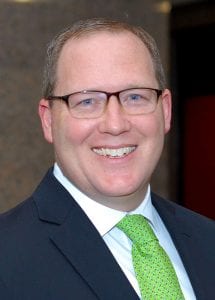 By Mike Bedel, CPA, CGMA
By Mike Bedel, CPA, CGMA By Lisa Purichia
By Lisa Purichia Sponsel CPA Group is proud to be recognized for the second year in a row by the Indiana Chamber of Commerce in its
Sponsel CPA Group is proud to be recognized for the second year in a row by the Indiana Chamber of Commerce in its  Karen Hume’s first experience with Sponsel CPA Group was as a client. Knowing it was a great team of people to work with, she happily joined the firm as a Manager in the Accounting Services department about a year ago. Karen came equipped with more than 20 years of accounting experience in positions varying from Senior Accountant and Controller to Vice President of Finance.
Karen Hume’s first experience with Sponsel CPA Group was as a client. Knowing it was a great team of people to work with, she happily joined the firm as a Manager in the Accounting Services department about a year ago. Karen came equipped with more than 20 years of accounting experience in positions varying from Senior Accountant and Controller to Vice President of Finance. By Lila Casper, CPA
By Lila Casper, CPA By Jason Thompson, CPA/ABV, ASA, CFE, CFF
By Jason Thompson, CPA/ABV, ASA, CFE, CFF Brandon Cangany joined the Sponsel family as an accounting intern in 2013, after graduating with distinction from IUPUI’s Kelley School of Business at IUPUI with a double major in finance and accounting.
Brandon Cangany joined the Sponsel family as an accounting intern in 2013, after graduating with distinction from IUPUI’s Kelley School of Business at IUPUI with a double major in finance and accounting. In a recent
In a recent  Michelle Badger joined the Sponsel CPA Group family around this time last year. With a business certificate from IUPUI and 15 years of experience in the field of accounting, she brings a wealth of knowledge to the table.
Michelle Badger joined the Sponsel CPA Group family around this time last year. With a business certificate from IUPUI and 15 years of experience in the field of accounting, she brings a wealth of knowledge to the table. By Tom Sponsel, CPA/ABV, CFF
By Tom Sponsel, CPA/ABV, CFF By Eric Woodruff, CPA
By Eric Woodruff, CPA Karen Parson started at Sponsel CPA Group around this time last year. (Happy anniversary, Karen!)
Karen Parson started at Sponsel CPA Group around this time last year. (Happy anniversary, Karen!) By (Name withheld at request of author)
By (Name withheld at request of author)  Tina Kelly has been with Sponsel CPA Group from the very beginning. With more than 30 years of experience in the accounting industry, she is a vital asset to the team.
Tina Kelly has been with Sponsel CPA Group from the very beginning. With more than 30 years of experience in the accounting industry, she is a vital asset to the team. By Lisa Purichia
By Lisa Purichia By Eric Woodruff, CPA
By Eric Woodruff, CPA As the executive director of the Indianapolis Children’s Choir (ICC), Don Steffy often finds himself reflecting on his own youth when he watches the young performers. His mind drifts back to the days of being a child actor, and he remembers what made him fall in love with performing.
As the executive director of the Indianapolis Children’s Choir (ICC), Don Steffy often finds himself reflecting on his own youth when he watches the young performers. His mind drifts back to the days of being a child actor, and he remembers what made him fall in love with performing. Kendra Koerting took on the receptionist role at Sponsel in the spring of 2015. She is the first person that clients and team members face when they walk through our doors.
Kendra Koerting took on the receptionist role at Sponsel in the spring of 2015. She is the first person that clients and team members face when they walk through our doors.









